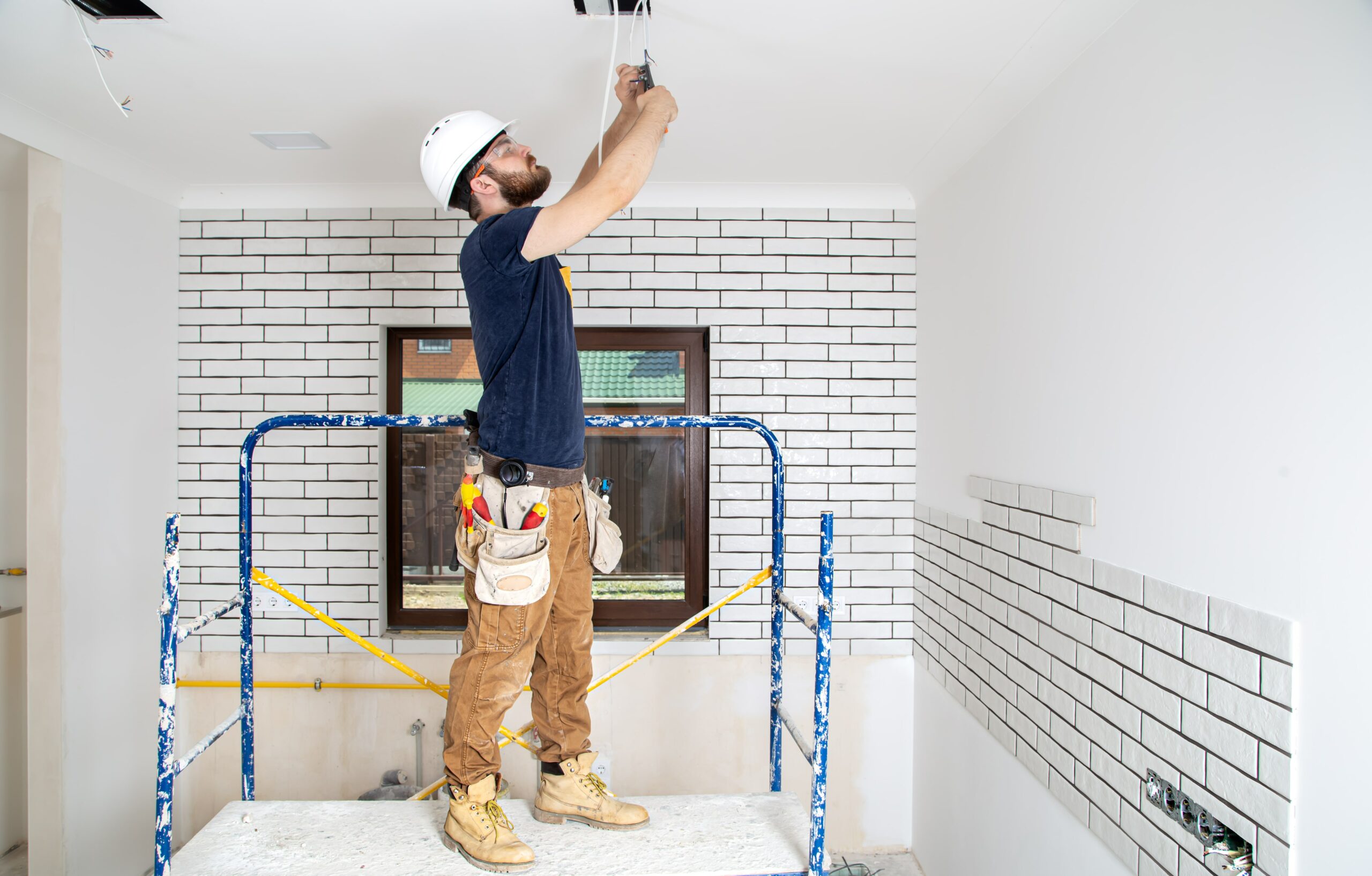
Standard Ceiling Height in Australia – A Comprehensive Building Code Guide
Standard ceiling height is a crucial element in architectural design, significantly impacting the overall feel and functionality of a space. Understanding the implications of ceiling height on room aesthetics, ventilation, and lighting is essential for homeowners and designers alike. From its influence on property value to creating an illusion of spaciousness or intimacy, the impact of ceiling height cannot be overstated.
Exploring how different standard ceiling heights in Australia can affect interior design choices and furniture arrangements provides valuable insights for anyone involved in construction or renovation projects. Join New South Homes as we unravel the multifaceted role that standard ceiling height plays in shaping our living and working environments.
Understanding Australian Standard Ceiling Heights
Australian Regulations
In Australia, regulations dictate the standard ceiling height for habitable rooms. Compliance with these regulations is mandatory for all construction projects like a new house. The minimum ceiling height requirements vary based on the building type. For instance, residential properties have different standards compared to commercial or industrial buildings.
For example, in Australia, a habitable room must have a minimum ceiling height of 2.4 meters. However, this can differ depending on whether it’s a residential or commercial property.
Building Types Comparison
Different types of buildings come with varying standard ceiling height requirements. Commercial buildings typically have higher ceilings compared to residential properties due to their specific functions and design preferences. Industrial and institutional buildings also require unique considerations.
For instance, retail stores often feature high ceilings to create an open and spacious feel for customers while accommodating tall shelves and displays.
Compliance Importance
Compliance with ceiling height Australia regulations is crucial for ensuring safety and functionality within buildings. Non-compliance can lead to legal penalties as well as project delays during construction or renovation processes. Meeting compliance standards is essential not only for safety but also for obtaining necessary building permits from local authorities.
For example, failing to meet the standard ceiling height requirements may result in delays in acquiring permits required for occupancy or usage of the building space.
Minimum Height Requirements
Habitable Rooms
Habitable rooms, such as bedrooms, living rooms, and kitchens, have specific minimum ceiling heights in Australia to ensure comfort and usability. For instance, a standard bedroom typically requires a minimum ceiling height of 2.4 metres for adequate headspace. This allows individuals to move freely without feeling cramped or restricted.
Adequate ceiling height in habitable rooms is crucial for enhancing the overall livability of a space, especially in a design like a split-level house. Imagine trying to cook in a kitchen with low ceilings – it would feel claustrophobic and uncomfortable. Similarly, relaxing in a living room with insufficient headroom can detract from the enjoyment of the space.
Nonetheless, it’s important to note that these requirements may vary slightly depending on local building regulations or specific design considerations.
Non-habitable Spaces
In contrast to habitable spaces, non-habitable areas like utility rooms and storage spaces have more flexible ceiling height requirements. These are areas where people don’t spend extended periods but rather use them for specific purposes such as laundry or storing items.
For example, utility rooms generally require enough overhead clearance to accommodate appliances like washing machines and dryers comfortably. However, this doesn’t necessarily need to meet the same strict standards as habitable spaces since they are not used for prolonged activities.
The flexibility in determining the appropriate height for non-habitable areas stems from their intended use – there isn’t an overarching need for uniformity across these spaces.
Ceiling Types and Characteristics
Plain Ceilings
Plain ceilings are a popular choice due to their simplicity and cost-effectiveness. The regular ceiling height for plain ceilings is typically around 8 feet, providing a practical and straightforward installation process. This standard height allows for the use of standard-sized building materials, reducing construction complexity and costs. The versatility of plain ceilings makes them suitable for various architectural styles, from modern to traditional designs.
Moreover, when considering the functionality of a space, such as in commercial buildings or residential properties with low clearance levels, maintaining the ceiling height Australian standard is crucial. For example, in basements or older homes with lower-than-standard heights, adhering to this measurement ensures consistency throughout the property while ensuring adequate headroom.
Furthermore, it’s important to note that maintaining a consistent ceiling design across different areas within a property can create visual harmony and flow. By following the standard ceiling height guidelines for plain ceilings throughout an interior space, uniformity is achieved seamlessly.
Coffered Ceilings
Coffered ceilings stand out due to their ability to add architectural interest and depth to interior spaces. When considering installing coffered ceilings in a property with specific minimum height requirements based on regulations or personal preferences (e.g., luxury real estate), careful consideration of the available vertical space becomes essential.
For instance, if working with limited overhead clearance in an existing structure or when planning new construction projects where high-end aesthetics are desired— such as luxury residences or upscale commercial establishments —the implementation of coffered ceilings must align with these spatial constraints.
Coffered ceilings contribute significantly to creating a luxurious and elegant aesthetic appeal within interiors by adding dimensionality through intricate patterns and detailing. However, it’s essential that any alterations made maintain compliance with local building codes regarding ceiling types, including necessary clearances above walking surfaces like floors.
Compliance and Non-compliance
Legal Implications
Non-compliance with standard ceiling height regulations can lead to legal disputes. Property owners may face lawsuits if the ceiling heights in their buildings do not meet the minimum standards set by local building codes. For example, a homeowner might sue a developer for inadequate ceiling heights that do not comply with the established regulations. This could result in financial penalties or even forced modifications to rectify the issue.
Furthermore, inadequate ceiling heights can significantly impact property resale value. Prospective buyers are likely to be deterred by ceilings that fall below standard requirements, leading to decreased demand and lower selling prices. As such, developers must ensure that they adhere to legal obligations regarding ceiling heights when constructing new properties or renovating existing ones.
Understanding these legal implications is crucial for developers as it enables them to avoid potential litigation and safeguard their investments. By prioritising compliance with ceiling height regulations from the outset of a project, developers can mitigate the risk of facing costly legal challenges down the line.
Avoidance Strategies
Engaging professional architects and builders is an effective strategy for avoiding potential ceiling height issues. These experts possess the knowledge and experience necessary to design and construct spaces that comply with relevant regulations while meeting aesthetic and functional requirements. Their expertise ensures that buildings are constructed with adequate headroom throughout, mitigating any non-compliance risks.
Conducting thorough site assessments also plays a vital role in identifying potential compliance challenges related to ceiling heights early on in a project’s development phase. By evaluating factors such as building dimensions, structural constraints, and zoning restrictions at an early stage, developers can proactively address any limitations before construction commences.
Implementing proactive planning measures further minimises the risk of non-compliance with regulations pertaining to standard ceiling height requirements. This includes conducting comprehensive research into local building codes and consulting with relevant authorities during initial project planning stages. Such diligence allows developers to integrate compliant designs into their projects from inception onwards.
Upgrading Ceiling Heights
Functional and Aesthetic Balance
When determining ceiling height, it’s essential to consider functional, aesthetic, and regulatory aspects. The standard ceiling height in a space can significantly impact its functionality and visual appeal. For instance, a higher ceiling can create an airy atmosphere and accommodate tall furniture or decorative elements. On the other hand, lower ceilings may promote a cozier ambiance but could limit the placement of certain fixtures or furnishings.
Balancing practicality with design preferences is crucial when considering ceiling height. While complying with building regulations is necessary for safety and structural integrity, meeting aesthetic expectations is equally important for overall satisfaction with the space.
Design Modifications
Various options exist to address specific ceiling height requirements in different spaces. Design modifications offer flexibility in achieving desired heights within regulations. For example, altering floor levels or incorporating architectural features like vaulted ceilings can effectively increase perceived vertical space without violating standards.
Innovative construction techniques provide solutions for challenging ceiling height scenarios. For instance, suspended ceilings or dropped beams can help maintain adequate clearance while visually creating the illusion of increased height. These methods allow designers to work within existing structural constraints while still achieving optimal spatial aesthetics.
Benefits of High Ceilings
Aesthetics Impact
The standard ceiling height significantly influences how spacious and open an interior space feels. When ceilings are higher than the standard, it creates an illusion of grandeur and airiness. This visual perception can enhance the overall aesthetic appeal of a room, making it more inviting and comfortable for its occupants. For instance, in large living rooms or entryways with high ceilings, there is a sense of freedom and openness that cannot be achieved with lower ceilings.
Optimal ceiling heights also play a crucial role in interior design. They allow for the incorporation of taller windows, grand light fixtures, and even vertical artwork displays that contribute to a visually appealing environment. As such, architects and designers often consider ceiling heights as one of the key elements when creating aesthetically pleasing spaces.
Resale Value Influence
Properties with higher than standard ceiling heights tend to command premium prices in the real estate market due to their perceived value by potential buyers. The impact on resale value is significant as adequate ceiling heights create an impression of luxury and exclusivity within a property. Homebuyers are willing to pay more for homes with soaring ceilings because they offer a unique selling point that sets them apart from properties with standard or lower-than-average ceiling heights.
In contrast, properties with low or standard ceiling heights may face challenges in attracting potential buyers who seek spaciousness and elegance in their future homes. Therefore, when considering home improvements aimed at increasing resale value, raising the ceiling height could be a strategic investment that yields substantial returns.
Ceiling Slope and Legalities
Sloped Ceilings
Sloped ceilings can add architectural character to a space, creating a unique and visually appealing environment. However, they also come with specific design considerations. When designing under sloped ceilings, it’s crucial to carefully plan the layout to maximise functionality while maintaining an aesthetically pleasing look. For example, in bedrooms with sloped ceilings, low furniture such as beds or dressers may be strategically placed to maximise usable space without feeling cramped.
In interior environments, sloped ceilings can create unique spatial experiences by adding depth and dimension to the room. This feature is often utilised in modern architectural designs or renovations where designers aim to create an open and airy atmosphere within a living space. By embracing the slope of the ceiling through clever lighting placement or accentuating architectural details like wooden beams or skylights, designers can enhance the overall aesthetic appeal of a room.
Height Laws Impact
Local building codes have a significant impact on standard ceiling heights, varying across different regions due to zoning laws and regulatory requirements. Certain areas may have specific laws that dictate minimum or maximum standard roof height in Australia for new construction projects or renovations. These regulations are put in place for safety reasons as well as urban planning concerns.
When undertaking building projects, it’s essential to adhere to local height laws not only for regulatory compliance but also for ensuring structural integrity and safety standards are met. Failure to comply with these regulations could result in legal consequences such as fines or halting construction activities until necessary adjustments are made.
Natural Light and Ceiling Height
Light Role
The standard ceiling height significantly influences the distribution of natural light within a space. Higher ceilings allow natural light to penetrate deeper into the room, creating a brighter and more open atmosphere. Conversely, lower ceilings can limit the amount of natural light that enters, resulting in a darker and more enclosed feel. This impact on natural light distribution underscores the importance of considering ceiling height when designing or renovating interior spaces.
artificial lighting placement and design are affected by ceiling height. Properly considering this factor is crucial for ensuring effective artificial lighting within an area with specific ceiling heights. For instance, rooms with higher ceilings may require different types of lighting fixtures compared to those with standard or lower-than-average ceiling heights. Therefore, architects and designers must carefully assess how varying ceiling heights will influence artificial lighting solutions to achieve optimal illumination throughout a space.
Design Considerations
When determining appropriate standard ceiling heights for architectural designs, it’s essential to consider various factors such as architectural styles and practical considerations. Different architectural styles often have their own preferences regarding ideal ceiling heights, influencing the overall aesthetic appeal of a building’s interior spaces. For example, buildings designed in a contemporary style may feature higher ceilings to create an expansive and modern ambiance, while traditional or historical architecture might favour lower ceilings for a cosier feel.
Balancing design aspirations with practical considerations is crucial during architectural planning processes involving ceiling height determinations. While aspiring for visually appealing interiors is important, practicality should not be overlooked; excessively high ceilings above the average roof height in Australia can lead to increased construction costs due to additional materials required for taller walls and increased energy consumption needed for heating or cooling larger volumes of air.
High Ceiling Challenges
Maintenance Factors
The standard ceiling height significantly impacts maintenance and cleaning within buildings. Adequate clearance is crucial for efficient operations, making it easier to access lighting fixtures, HVAC systems, and other essential components. When constructing a building, planners consider the practicality of maintaining various aspects such as electrical wiring and fire suppression systems. For instance, in spaces with higher ceilings, specialized equipment or additional safety measures might be necessary for routine maintenance tasks.
Properly planned maintenance factors into decisions regarding average house height in Australia during construction projects. This includes not only the initial installation but also future upkeep requirements. Buildings with taller ceilings may require more frequent cleaning due to increased air volume and potential dust accumulation at greater heights.
Air Circulation Issues
The standard ceiling height plays a critical role in ensuring optimal air circulation within enclosed spaces. In rooms with lofty ceilings, warm air tends to rise and accumulate near the top of the room while cooler air remains closer to the floor level. This can lead to temperature stratification where different layers of air have varying temperatures.
For comfort and health reasons indoors, proper ventilation considerations are essential when determining height of a standard ceiling. Adequate clearance promotes optimal air circulation throughout interior environments by allowing warm air to disperse evenly across a space rather than concentrating near the top.
Summary
The various aspects of standard ceiling heights have been thoroughly explored, from understanding the requirements to the benefits and challenges associated with different ceiling types. It is evident that compliance with minimum height regulations is crucial, and the potential advantages of high ceilings, such as improved natural light and a sense of spaciousness, are worth considering. However, the legalities surrounding ceiling slope and the complexities of upgrading ceiling heights should not be overlooked.
Readers are encouraged to consult professionals for specific advice related to their unique circumstances, whether considering renovations or seeking solutions to high ceiling challenges. Exploring further resources and seeking expert guidance can provide valuable insights for navigating the intricacies of ceiling height regulations and design considerations.
Experience
the
Difference
Ready to start your building journey? Chat to our team of experts today and get a FREE personalised quote
Find Out More
Related Posts







